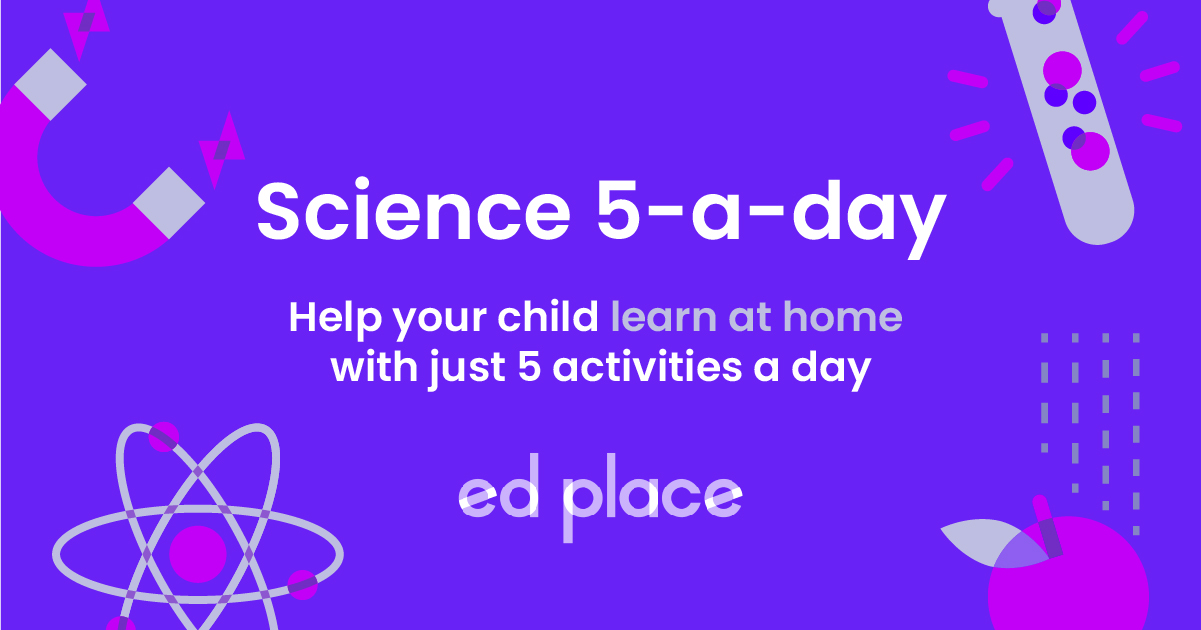
EdPlace's Year 2 Home Learning Science Lesson: Animals and their Offspring
Looking for short lessons to keep your child engaged and learning? Our experienced team of teachers have created English, maths and science lessons for the home, so your child can learn no matter where they are. And, as all activities are self-marked, you really can encourage your child to be an independent learner.
Get them started on the lesson below and then jump into our teacher-created activities to practice what they've learnt. We've recommended five to ensure they feel secure in their knowledge - 5-a-day helps keeps the learning loss at bay (or so we think!).
Are they keen to start practising straight away? Head to the bottom of the page to find the activities.
Now...onto the lesson!
Which baby belongs to which animal?
In Key Stage 1 Science, there is a lot of emphasis on understanding animals, including humans. This lesson is all about animals and their offspring. In includes what happens to us humans as we grow up, as well as looking at different animals and what their offspring are called. Your child may already know lots of different animal facts, but knowing what their offspring are called too is important knowledge that they need! Want some help in explaining this one to your child? Then read on!
We're confident that if you follow the step-by-step approach below your child will be able to:
1) Understand that all animals have offspring which grow into adults, including the stages of human development
2) Apply this understanding when looking at different animal babies
3) Explain why and how they know which offspring belongs to which animal.
Step 1: Check their Current Understanding
Before starting something new, it’s important to check in with your child about what they already know about the topic. Here is some key vocabulary that will come up during the lesson – make sure your child is happy with these words before moving on!
Off-spring – the child or ‘young’ of an animal
Animal – A living creature such as a lion, dog, butterfly or human.
Step 2: Let's start by looking at what we know best - humans!
It’s important to emphasise to your child that we, as humans, fall under the ‘animal’ category – and it can be useful to learn about ourselves first. Have a discussion with your child about what they already know about growing up and see if they can name the different stages that humans go through.
Ask them questions like:
‘What can/can’t babies do?’
‘What can you do now that you couldn’t one year ago?’
‘What do you think will have changed for you in one year?’
It might be useful to look at this chart together, to discuss the different changes we, as humans go through:
|
Baby |
Toddler |
Child |
Teenager |
Adult |
Elderly |
|
Age 0 – 1 Babies can’t do anything for themselves – they need a grown-up to help them eat, stay clean and sleep. |
Age 1 – 3 Toddlers start to learn to walk and talk and be more independent but they still need lots of help from grown-ups. |
Age 3 – 12 Children become much more able to look after themselves as they begin school and learn lots of new things! |
Age 13 – 19 Teenagers are at secondary school and very independent. Their bodies may start changing. |
Age 20 – 65 Adults are fully grown and usually able to take care of themselves and sometimes others too. |
Age 65 onwards Lots of elderly people are still very healthy and independent but might start to need a little bit of help moving around. |
Step 3: Moving on to animals
Just like humans, animals also have babies which grow into adults. Most animals don’t go through quite so many stages as us humans though! They are often called ‘young’ and then, ‘adult’. It is usually quite easy to recognise which animal babies belong to which as they look very similar. For example:
Dogs have puppies, and look very similar!
Sheep have lambs, who also look the same (just a bit less fluffy!)
And lions have lion cubs.
But don’t be fooled – not all animal have offspring that look like them. For example, this little tadpole...
...will turn into a frog!
Step 4: Putting it into practise....
Your child probably knows the names of many different animals, but the name of their offspring might be slightly trickier. Why not show them some of the pictures below and see what they know. Can they tell you the name of the animal and what it will grow up to become? Encourage them to share anything else they know about the animal – children often know lots of interesting facts that they can teach us!
Step 5 - Activity time!
Hopefully, your child has a good understanding of animals and their offspring now. Why not keep practising this knowledge by working through some of the below activities:
All activities are created by teachers and automatically marked. Plus, with an EdPlace subscription, we can automatically progress your child at a level tailored to their needs. Sending you progress reports along the way so you can track and measure progress, together - brilliant!
Activity 3 - Animals and their Babies
Activity 5 - The Life Cycle of a Butterfly
Answers:
1) Kitten – Cat
2) Caterpillar – Butterfly
3) Chick – Duck
4) Foal – Horse
5) Owlet – Owl
Keep going! Looking for more activities, different subjects or year groups?
Click the button below to view the EdPlace English, maths, science and 11+ activity library








